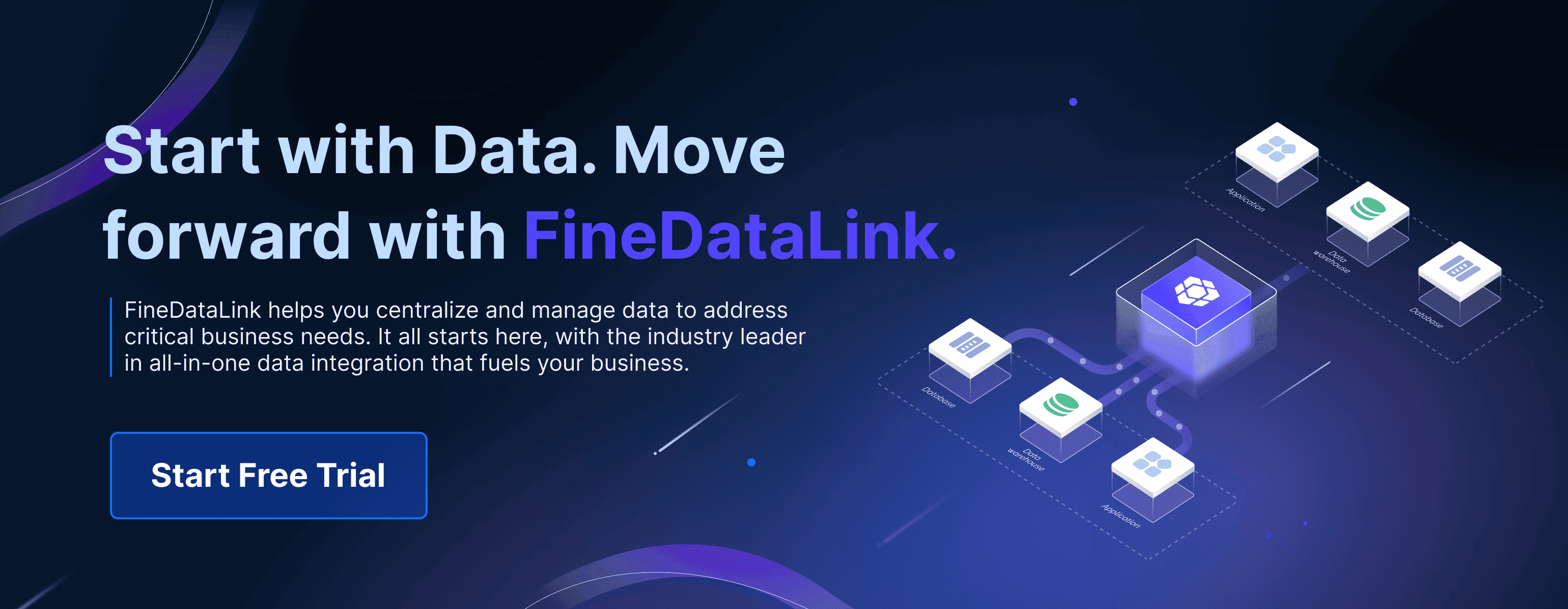

Data fragmentation occurs when information spreads across disconnected systems, platforms, or silos. In 2025, as businesses rely more on data for decisions and innovation, this issue becomes even more pressing. Fragmented data disrupts efforts to create a cohesive data-driven culture. It limits visibility into customer and product insights, inflates storage costs, and increases risks tied to governance and security. Addressing this challenge ensures operational efficiency and strengthens your competitive edge in a data-driven world.
Key Takeaways
- Data fragmentation happens when data is spread across many systems. This makes it hard to find and use the data easily.
- Fixing data fragmentation helps businesses work better, save money, and make smarter choices.
- Setting up clear data rules helps organize data and lowers the chance of having scattered data.
- Tools like FineDataLink can help connect data, keep it updated, and improve its accuracy.
- Keeping data together improves customer experience by offering smooth and tailored services on all platforms.
Understanding Data Fragmentation in 2025
What Is Data Fragmentation?
Data fragmentation happens when information is scattered across disconnected systems, platforms, or silos. This scattering can take several forms, as shown below:
When your data is fragmented, it becomes harder to access, analyze, and use effectively. This issue affects businesses of all sizes, making it a critical challenge to address in 2025.
Why Data Fragmentation Is a Growing Concern
In 2025, the reliance on data for decision-making has reached unprecedented levels. However, fragmented data creates significant barriers. For example, IT teams spend an average of 19 weeks annually managing data and app infrastructure across public cloud environments. To fully utilize stored data, IT teams would need to expand by over a third, and budgets would need to increase by nearly half.
When data is scattered, organizations struggle to leverage it effectively. This inefficiency slows digital transformation and increases operational costs. You may find it harder to make timely decisions, which can impact your ability to stay competitive in a fast-paced market.
The Role of Modern Data Management in Addressing Fragmentation
Modern data management systems play a vital role in solving data fragmentation. A unified approach to managing data reduces risks, improves security, and enhances operational efficiency. For instance:
- Fragmented data has led to security breaches, highlighting the importance of visibility into data stores.
- Centralized systems significantly reduce fragmentation and improve accessibility.
- API integration connects disparate systems, enabling better data flow and management.
By adopting these strategies, you can streamline your operations and make better use of your data. Tools like FineDataLink offer real-time data synchronization, advanced ETL/ELT capabilities, and API integration, making them essential for tackling data fragmentation in 2025.
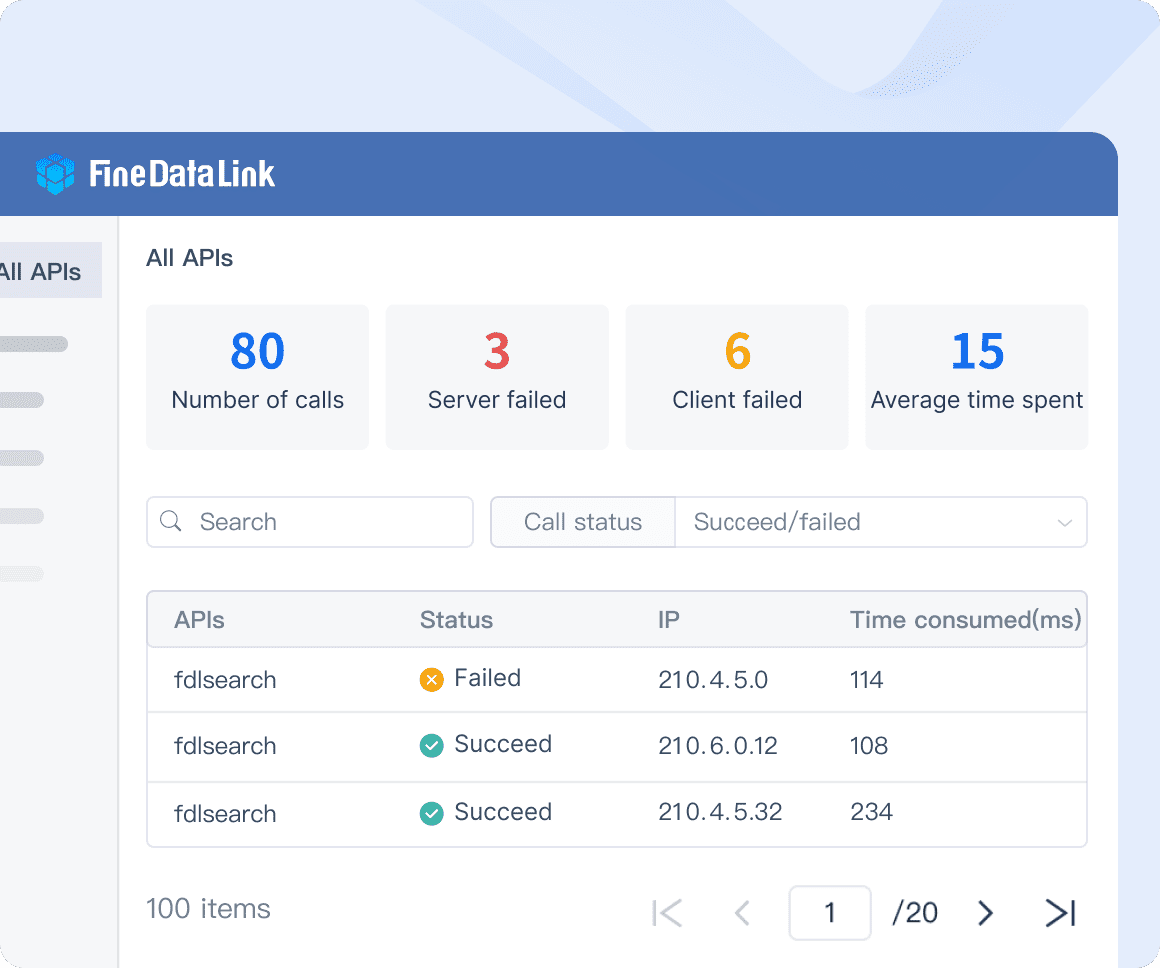
Causes of Data Fragmentation
Data Silos and Organizational Barriers
Data silos emerge when departments or teams store information in separate systems, making it difficult to share or integrate data across the organization. These silos often result from a lack of communication or collaboration between teams. For example, your marketing team might use one platform to track customer data, while your sales team relies on another. This separation creates barriers that prevent you from gaining a unified view of your operations.
When data silos exist, they contribute significantly to data fragmentation. You may find it challenging to access critical information when needed. This lack of integration can slow down decision-making and reduce your ability to respond to market changes. Breaking down these silos requires fostering a culture of collaboration and implementing tools that enable seamless data sharing.
Tip: Encourage cross-departmental communication and invest in platforms like FineDataLink to unify your data sources and eliminate silos.
Duplication of Data Across Systems
Duplicate data occurs when the same information exists in multiple locations or systems. This duplication often happens when teams manually transfer data between platforms or when automated processes fail to synchronize properly. For instance, customer records might appear in both your CRM and billing systems, but with slight variations. These inconsistencies can lead to confusion and errors.
Managing duplicate data is not just time-consuming; it also increases storage costs and complicates compliance efforts. You might spend hours reconciling records, only to find that discrepancies still exist. Addressing this issue requires implementing robust data integration solutions that ensure consistency across all systems.
To tackle duplicate data effectively, consider using tools like FineDataLink. Its real-time synchronization and ETL/ELT capabilities help maintain data accuracy and reduce redundancy. By streamlining your data processes, you can focus on deriving insights rather than fixing errors.
Technological Scattering and Legacy Systems
Technological scattering occurs when your organization uses multiple, disconnected systems to manage data. Legacy systems, which are outdated technologies still in use, often exacerbate this problem. These systems may lack the ability to integrate with modern platforms, leaving your data fragmented and difficult to access.
When data is scattered across various systems, it becomes nearly impossible to leverage its full potential. Inefficiencies in computer capacity arise, and compliance with regulatory requirements becomes more complex. For example, Kitt Creative, a photography studio, faced operational challenges due to disconnected systems and poor data management. After adopting an integration solution, they gained a comprehensive view of their operations, demonstrating the importance of addressing technological scattering.
Modernizing your infrastructure is essential to overcoming these challenges. Solutions like FineDataLink provide seamless integration across diverse systems, including legacy platforms. By consolidating your data, you can improve efficiency and ensure compliance with industry standards.
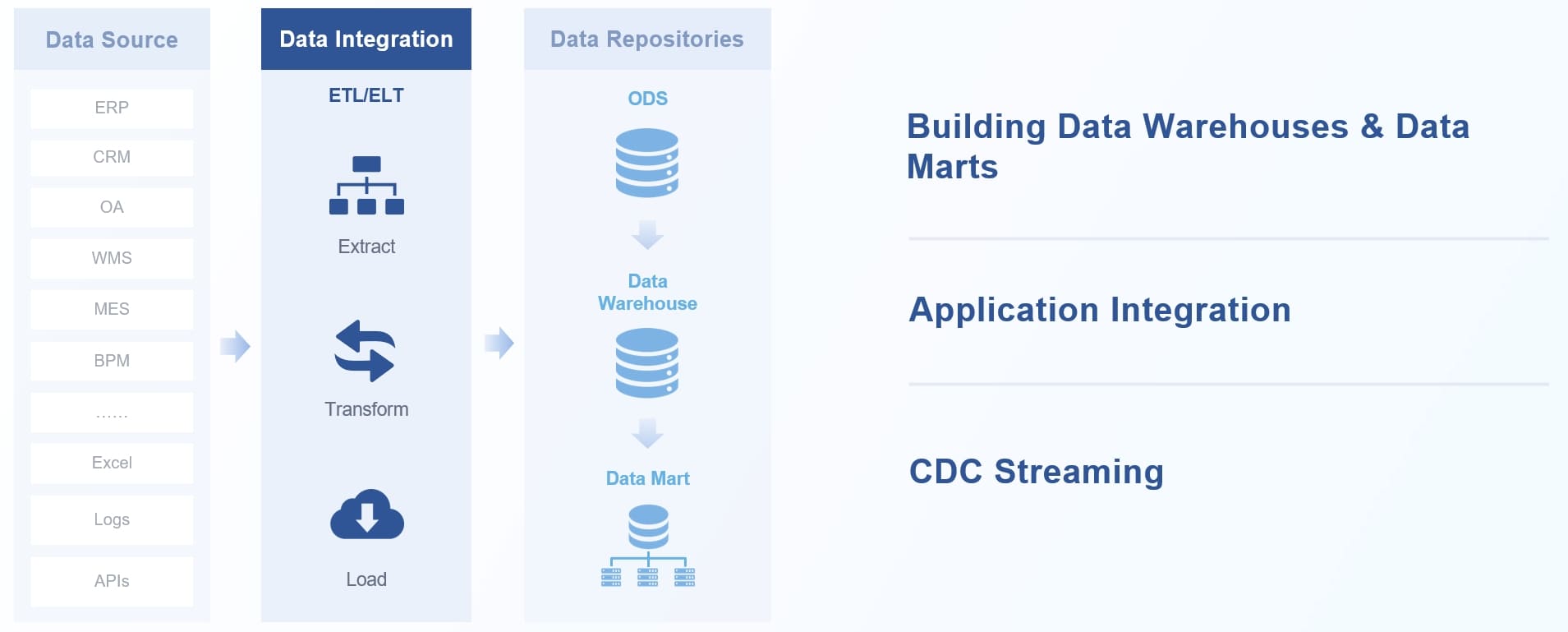
Risks and Challenges of Data Fragmentation
Impaired Decision-Making and Analytical Capabilities
Fragmented data disrupts your ability to make informed decisions. When data exists in inconsistent formats or across disconnected systems, it becomes harder to analyze and share. For example, healthcare organizations often struggle with fragmented patient records. Incomplete or duplicate entries inflate data volume and create confusion during analysis. These inconsistencies can hinder accurate medical assessments and treatment plans, ultimately affecting patient outcomes.
The influx of unfiltered big data further complicates decision-making. Without harmonizing diverse data types, meaningful insights become diluted. This challenge impacts businesses across industries, as fragmented data reduces the reliability of analytics. You may find it difficult to identify trends or predict outcomes, limiting your ability to respond effectively to market changes. Addressing data fragmentation ensures your analytical capabilities remain sharp and actionable.
Reduced Operational Efficiency and Increased Costs
Data fragmentation leads to inefficiency in your operations. When information is scattered across multiple systems, employees spend more time searching for data instead of focusing on productive tasks. This inefficiency slows workflows and increases labor costs. For instance, IT teams often dedicate weeks to managing fragmented data infrastructure, diverting resources from strategic initiatives.
Storage costs also rise due to duplicate data. Redundant copies inflate the amount of space required, forcing you to invest in additional storage solutions. Fragmentation complicates data management, making it harder to optimize your infrastructure. By centralizing your data, you can reduce inefficiencies and lower operational expenses.
Security and Compliance Risks
Fragmented data storage exposes your organization to security vulnerabilities. Each disconnected system creates an entry point for attackers, increasing the risk of breaches. A case study revealed that fragmented data delayed breach detection by weeks, allowing sensitive information to be exfiltrated. This delay highlights the importance of unified data management.
Compliance with regulations like GDPR and CCPA becomes challenging when data is scattered. Disconnected systems make it harder to track and manage sensitive information, risking violations and penalties. Unified governance frameworks and tools like FineDataLink help you consolidate data, improving security and ensuring compliance.
Tip: Strengthen your security posture by integrating your data systems. This reduces entry points and simplifies compliance efforts.
Solutions to Address Data Fragmentation
Leveraging FineDataLink for Unified Data Integration
FineDataLink simplifies solving data fragmentation by offering a centralized platform for data integration. Its real-time synchronization capabilities ensure that data flows seamlessly across systems, eliminating silos and improving data quality. With advanced ETL/ELT features, you can transform and consolidate data from diverse sources into a unified format. This makes it easier to analyze and derive actionable insights.

The platform’s low-code interface allows you to build APIs in minutes, enabling efficient data sharing between applications. For example, businesses using SaaS tools often struggle with fragmented data due to limited connectivity options. FineDataLink bridges this gap by supporting over 100 common data sources, ensuring compatibility across systems. This versatility makes it a cost-effective solution for centralized data management.
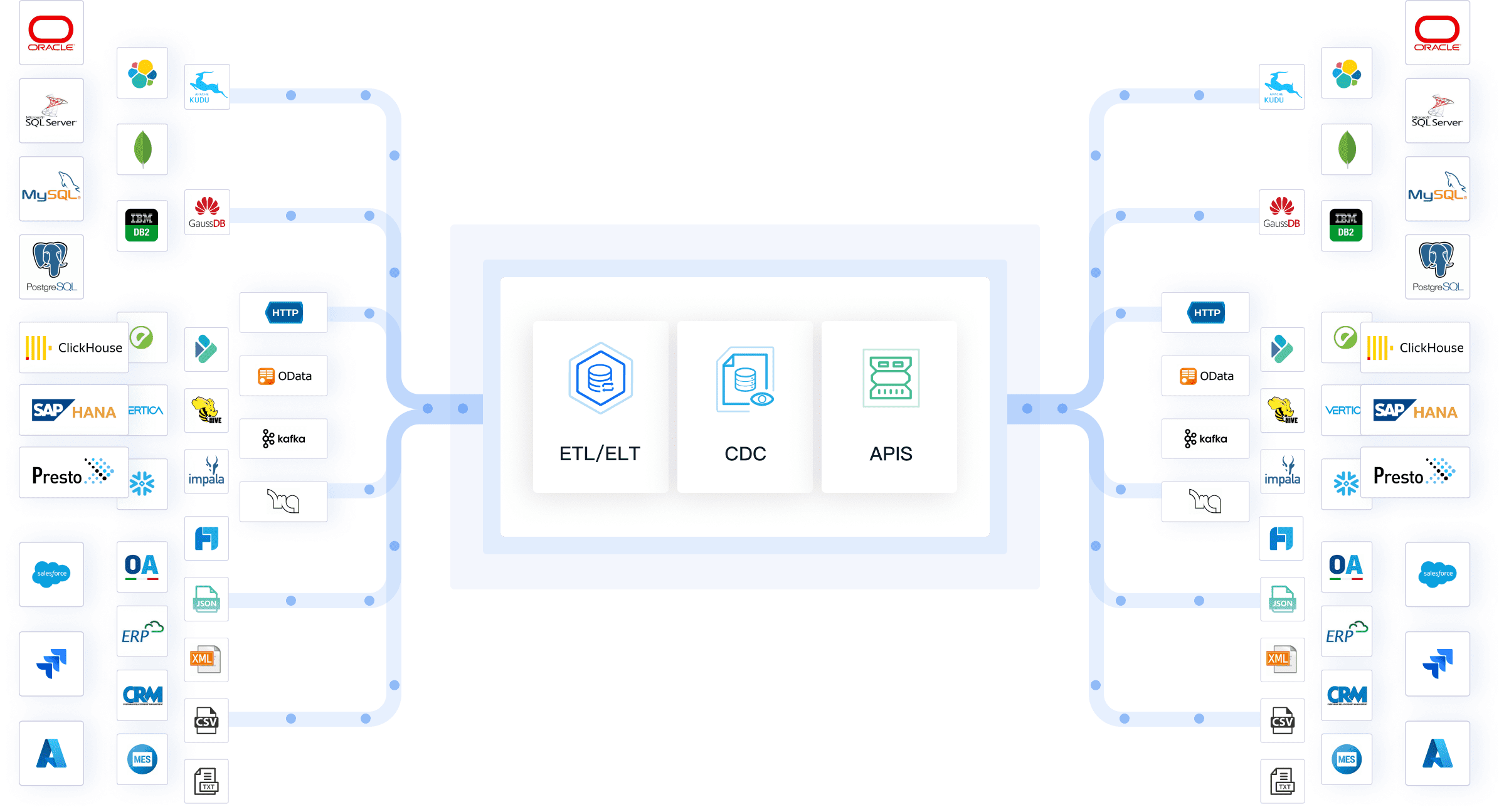
FineDataLink stands out among competitors by offering real-time data pipelines that reduce latency to milliseconds. This feature is particularly useful for building real-time data warehouses, ensuring your organization can access up-to-date information whenever needed. By leveraging FineDataLink, you can streamline your data integration processes and enhance operational efficiency.
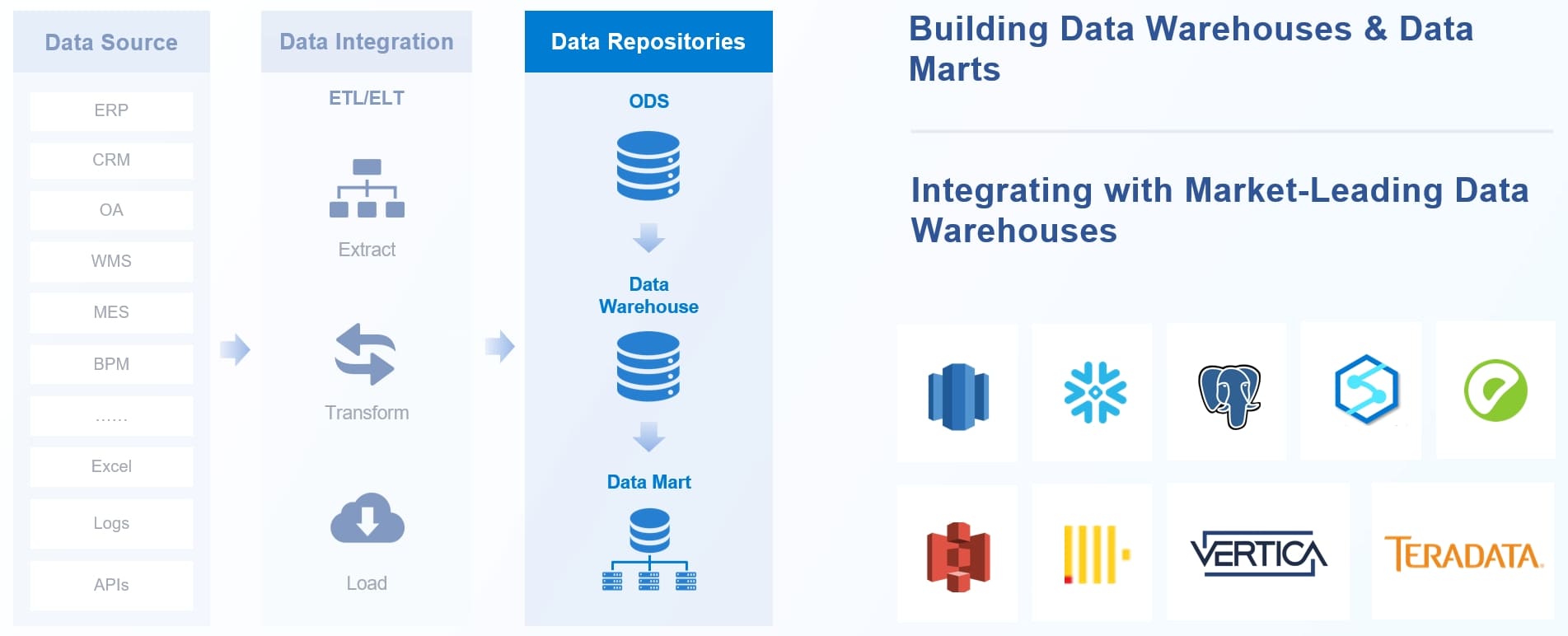
Tip: Use FineDataLink to synchronize data across systems and improve data quality, ensuring your organization stays ahead in a data-driven world.
Optimizing Data Infrastructure with FanRuan Solutions
FanRuan provides comprehensive solutions to optimize your data infrastructure and address fragmentation. Its suite of tools, including FineDataLink, enables businesses to consolidate data from multiple systems into a single, accessible platform. This reduces inefficiencies caused by technological scattering and legacy systems.
Modernizing your infrastructure with FanRuan solutions ensures seamless integration across diverse environments. For instance, FineDataLink’s ETL/ELT capabilities allow you to preprocess data efficiently, making it suitable for building both offline and real-time data warehouses. This optimization not only improves data quality but also reduces storage costs by eliminating duplicates.
FanRuan’s solutions also enhance scalability, allowing your organization to handle large volumes of data without compromising performance. By adopting these tools, you can overcome the challenges of fragmented systems and create a robust foundation for data management. This approach empowers you to make informed decisions and respond quickly to market changes.
Callout: Optimizing your infrastructure with FanRuan solutions ensures your data remains accessible, reliable, and ready for analysis.
Establishing Robust Data Governance Frameworks
Robust data governance frameworks play a crucial role in minimizing data fragmentation. These frameworks standardize data management practices, ensuring consistency and reducing the risks associated with isolated repositories. The Global Data Governance Index highlights how effective governance enhances data accessibility and reduces fragmentation across sectors.
Retailers have successfully implemented AI-driven governance frameworks to address fragmented customer data. By standardizing formats and eliminating duplicates, they created reliable customer profiles. This improved engagement and conversion rates, showcasing the importance of governance in solving data fragmentation.
- Retailers faced challenges with fragmented customer data across multiple systems, leading to inconsistent marketing and poor insights.
- Implementing an AI data governance framework helped standardize data formats and eliminate duplicates, creating a reliable source of truth for customer profiles.
- This resulted in improved customer engagement and conversion rates, showcasing the effectiveness of data governance in minimizing fragmentation.
Unified governance policies also simplify compliance with regulations like GDPR and CCPA. By defining clear rules for data storage and access, you can reduce fragmentation and improve security. Tools like FineDataLink support these frameworks by providing real-time synchronization and centralized data management. This ensures your organization can maintain high data quality while meeting regulatory requirements.
Note: Conduct a data audit to identify gaps in your governance practices. Establishing a unified framework will help you reduce fragmentation and improve operational efficiency.
Using AI and Automation for Data Consistency
AI and automation have revolutionized how organizations manage and maintain data consistency. These technologies streamline processes, reduce errors, and ensure that your data remains accurate and reliable across systems. By automating repetitive tasks and leveraging machine learning algorithms, you can eliminate manual interventions that often lead to inconsistencies.
AI-powered tools excel at automating data ingestion and transformation. They process large volumes of information quickly, ensuring accuracy and compliance. For example, anomaly detection mechanisms identify and correct errors in real time, preventing fragmented or duplicate data from disrupting your operations. This automation not only saves time but also enhances the quality of your datasets.
Organizations that adopt AI and automation see measurable improvements in data reliability. Companies with strong data governance frameworks, supported by AI, report a 20% improvement in data quality. This boost reflects the ability of AI to standardize and clean data, reducing dependency on manual processes. For instance, IBM Watson Health achieved a 15% increase in diagnostic accuracy and reduced medication errors by 30% through data standardization efforts.
Automation also plays a critical role in integrating data from multiple sources. Google’s Waymo, for example, used data fusion techniques to improve the reliability of sensor data, achieving over 99% accuracy during testing. Similarly, Amazon enhanced its recommendation systems by cleaning and integrating datasets, leading to increased sales. These examples highlight how AI-driven automation ensures consistent and actionable data.
By incorporating AI into your data management strategy, you can address fragmentation and improve operational efficiency. Tools like FineDataLink integrate AI capabilities to automate data synchronization and transformation. This ensures that your data remains consistent, accurate, and ready for analysis. Whether you’re managing customer records or building real-time data warehouses, AI and automation provide the foundation for reliable data management.
Tip: Start small by automating one aspect of your data processes, such as data ingestion or anomaly detection. Gradually expand automation to other areas for maximum impact.
Why Tackling Data Fragmentation Is Critical in 2025
The Role of Unified Data in Driving Competitive Advantage
Unified data is a cornerstone of competitive advantage in 2025. Businesses that consolidate their data into a single, accessible platform can unlock its full potential. This approach enables you to monitor data health, track its lineage, and assess its impact on performance. These capabilities foster operational efficiency and innovation, giving you an edge over competitors.
Big data analytics (BDA) plays a pivotal role in this process. By analyzing unified datasets, you can uncover hidden patterns and insights that drive strategic decisions. Research shows that companies leveraging data-driven decision-making are more productive and profitable than those that do not. Unified data also reduces costs, supports innovation, and enhances decision-making processes, all of which contribute to long-term success.
Enhancing Agility and Innovation Through Integrated Platforms
Integrated platforms allow you to respond quickly to market changes and customer demands. When your data is scattered, decision-making slows down. However, a unified system eliminates these delays, enabling you to act with agility. For example, real-time data synchronization ensures that your teams always have access to the latest information, empowering them to make informed decisions.
Innovation thrives in environments where data flows seamlessly. Integrated platforms simplify collaboration across departments, allowing you to develop new products and services faster. By addressing data fragmentation, you create a foundation for continuous improvement and adaptability, ensuring your business remains competitive in a rapidly evolving landscape.
Meeting Evolving Customer Expectations in a Data-Driven World
Today’s customers expect personalized and seamless experiences. Data-driven personalization allows you to tailor marketing efforts and services to individual needs. Integrated data strategies make this possible by providing a unified view of customer behavior. For instance, personalized recommendations simplify decision-making for consumers, increasing trust and loyalty.
Omnichannel experiences are another key expectation. Customers want cohesive interactions across platforms, whether they are shopping online or visiting a physical store. Unified data ensures that every touchpoint feels connected, enhancing satisfaction and retention. Meeting these expectations not only improves customer relationships but also strengthens your brand’s reputation.
Understanding and addressing data fragmentation is essential for businesses aiming to thrive in 2025. Unified data management empowers organizations to enhance operational efficiency and make informed decisions. For example, Walmart’s AI-driven inventory system optimizes stock levels, improving customer satisfaction and reducing costs. Tools like FineDataLink simplify data integration, enabling real-time synchronization and advanced analytics. By prioritizing unified data strategies, you can reduce inefficiencies, improve decision-making, and stay competitive in a data-driven world.
FAQ
Data fragmentation often happens due to data silos. Departments store information in separate systems, making it hard to integrate. This lack of communication and collaboration creates isolated data repositories, which disrupts your ability to access and analyze information effectively.
Fragmented data reduces visibility and creates inconsistencies. You may struggle to gather accurate insights, leading to delayed or poor decisions. Unified data ensures you have reliable information, enabling faster and more informed choices.
Yes, legacy systems often lack integration capabilities. They store data in outdated formats, making it difficult to connect with modern platforms. Upgrading or integrating these systems with tools like FineDataLink can help reduce fragmentation.
FineDataLink centralizes your data by synchronizing it in real time. It supports over 100 data sources and offers advanced ETL/ELT capabilities. These features eliminate silos, reduce duplication, and improve data quality, ensuring seamless integration across systems.
In 2025, businesses rely heavily on data for innovation and competitiveness. Fragmented data slows operations, increases costs, and impacts customer experience. Tackling this issue ensures efficiency, compliance, and the ability to meet evolving market demands.
Continue Reading About Data Fragmentation
Best Data Integration Vendors for Seamless Workflows
Discover the top 20 data integration vendors of 2025 for seamless workflows. Compare tools like Talend, AWS Glue, and Fivetran to optimize your data processes.
Howard
Jan 22, 2025
Best Data Management Tools of 2025
Explore the best data management tools of 2025, including FineDataLink, Talend, and Snowflake. Learn about their features, pros, cons, and ideal use cases.
Howard
Aug 04, 2024
Customer Data Integration: A Comprehensive Guide
Master customer data integration to enhance business operations by combining data from multiple sources for a comprehensive customer view.
Howard
Sep 07, 2024


